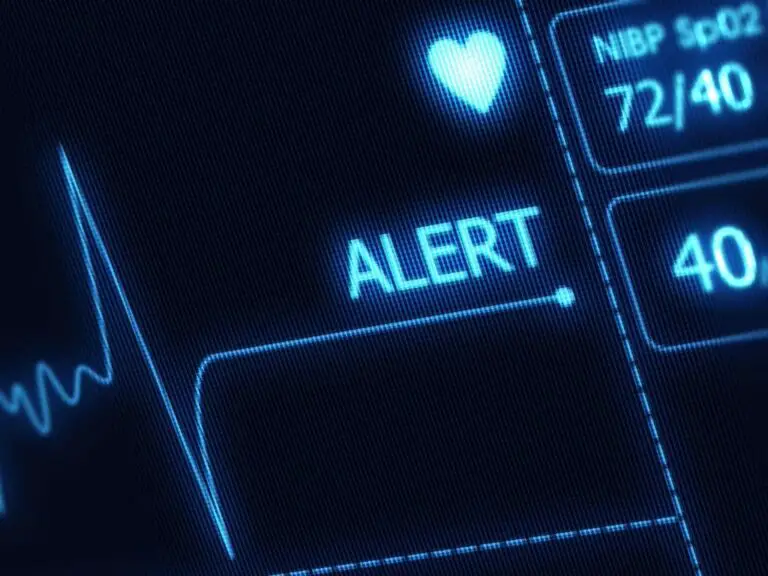What Is the Busiest ER in Michigan?
Emergency rooms across Michigan experience a wide range of patient volumes and wait times. However, when examining the data, a few hospitals stand out as the busiest ERs in the state. These emergency departments see the highest number of patients annually, along with some of the longest wait times.
The busiest ER in Michigan is the one at University of Michigan Health-Ann Arbor.
Other top contenders, based on annual patient visits, include Henry Ford Hospital in Detroit, Spectrum Health Butterworth Hospital in Grand Rapids, and the Beaumont Hospital in Royal Oak.
What drives certain Michigan ERs to constantly rank among the busiest in the state? Factors like location in major metropolitan areas, status as trauma centers, reputation, specialty care offerings, and the prevalence of Medicaid patients all contribute. These busier ERs report longer average wait times, frequent ambulance diversion, and patient dissatisfaction with long delays for treatment.
Yet when faced with a true emergency, Michigan residents still often turn to these major ERs viewed as centers of excellence. Understanding peak hours, common cases, ways to avoid unnecessary ER visits, and how to navigate a busy urban emergency room can help Michigan patients make the most of their ER experience.

What Is the Busiest ER in Michigan?
The busiest ER in Michigan is the one at University of Michigan Health-Ann Arbor. This facility provides senior health services and wellness programs to residents of Detroit and the surrounding areas. The staff at this hospital are dedicated to providing quality care to their patients and their families.
They offer a wide range of services, including emergency care, primary care, mental health services, and more. In addition, they also have a state-of-the-art fitness center on site for seniors who want to stay active and healthy.
The Busiest ERs in Michigan
As we age, our bodies go through a lot of changes. We may not be able to do the things we used to do, and we may need more help taking care of ourselves. That’s why it’s important to find a health care provider who understands these changes and can help us stay healthy and well.
The busiest ERs in Michigan are often those that serve the state’s senior population. With so many seniors living in Michigan, these ERs see a lot of patients with age-related issues. This can include anything from falls to heart attacks.
If you’re a senior citizen in Michigan, it’s important to know which ERs are the busiest and how to get there if you need medical attention.
Here are some tips for senior citizens in Michigan needing to go to the ER:
- Avoid going to the ER on weekends or holidays if possible, as these tend to be the busiest times. Try to go on a weekday if you can.
- The busiest ERs are usually located in major cities and hospital centers, like Detroit, Ann Arbor, Grand Rapids, etc. ERs in suburban and rural areas may have shorter wait times.
- Have someone drive you to the ER if possible, as parking can be difficult to find at busy hospitals. If you must drive yourself, allow extra time to find parking.
- Bring a list of all your medications, medical conditions, and allergies to provide to the ER staff. Also bring your insurance card and ID.
- You can call ahead to the ER you’re planning to visit and ask what their current wait time is. However, this can change quickly.
- If your medical issue is not life-threatening, consider going to an urgent care instead of the ER, as they tend to be less busy.
- Be patient as ERs must triage patients based on severity of conditions. Your wait may be long, but more critical cases will be seen first.
- If possible, have a family member, friend or caregiver accompany you to the ER to advocate for you if needed.
Why Is University of Michigan Health-Ann Arbor ER the Busiest?
There are a few key reasons why the University of Michigan Health-Ann Arbor ER tends to be one of the busiest in the state:
- It is a large, Level 1 trauma center – This means it is equipped to handle the most complex and critical medical cases. More severe injuries and illnesses get sent here, increasing patient volume.
- Academic medical center – As a teaching hospital affiliated with the University of Michigan Medical School, there are more patients coming in for treatment. This includes patients participating in clinical trials and students practicing in the ER.
- Regional population density – Ann Arbor is in a heavily populated area of Southeast Michigan. As a major medical center for the region, people come from all around for treatment.
- Specialized care – UM’s hospital offers specialized care not available everywhere, like organ transplants and pediatric emergency services. People travel farther to access this specialized care.
- Reputation – It has a reputation for high-quality emergency care and complex treatment options. This draws more people to seek care.
- Trauma designation – It serves as a trauma center for a large portion of the state. Paramedics know to bring serious traumas here.
The combination of being a highly-advanced academic medical center in a populated area leads to it being one of the busiest ERs in Michigan. The case mix trends towards more severe and complex patients as well.
How Do They Handle the Volume?
University of Michigan Health-Ann Arbor employs several strategies to handle the high volume of patients in their busy emergency room, including caring for senior citizens.
- Triage system – Patients are evaluated and prioritized based on severity of condition upon arrival. This ensures the sickest patients are seen first. Senior patients reporting severe or life-threatening symptoms would be prioritized.
- Staffing adjustments – Patient volume is monitored and additional physicians, nurses, and other ER staff are called in during times of high occupancy. This provides adequate staffing levels.
- Care coordination – For senior patients, they have a care coordinator who can connect them to geriatric services, ensure medications are adjusted properly, arrange follow-ups, and facilitate discharge planning.
- Social work assistance – Social workers help coordinate care for seniors who may need placement in rehab facilities, nursing home care, or home health services after discharge.
- Streamlined IT system – Their electronic medical record system and patient tracking helps coordinate care between providers and units efficiently.
- Observation unit – Less acute patients can be sent to an observation unit with increased monitoring for 12-24 hours rather than fully admitting them.
- Redirecting non-emergencies – Patients who come to the ER with non-urgent conditions may be redirected to more appropriate outpatient clinic settings after medical screening.
- Expanded space – In 2019, they expanded the ER space to include more patient rooms and treatment areas.
They use a combination of clinical coordination, social services, health IT, and facility expansion to handle the heavy senior patient volume. Triage prioritization also ensures seniors get timely care based on severity of symptoms.
Are There Any Benefits to Going to a Busy ER?
There can be some potential benefits for senior citizens in going to a busier, high-volume emergency room like University of Michigan’s:
- Increased access to specialists – Large academic medical centers like U of M have more medical specialists on staff that seniors can be referred to quickly if needed. This includes geriatricians.
- Higher intensity of care – With more patients and staff, busy ERs can provide rapid, high-intensity care that is live-saving for seniors in crisis. This includes access to scans, tests, procedures, and consultations.
- More clinical experience – Doctors and nurses in busy ERs generally have more experience treating a wide range of conditions given the volume they handle. This can benefit diagnosis and treatment for seniors.
- Reduced wait times – Counterintuitively, some very high-volume ERs actually reduce wait times through strict triage protocols, “fast track” units, and streamlined care. Seniors may get seen faster.
- Access to clinical trials – Academic medical centers give seniors access to cutting edge treatments and medications being studied in clinical trials that may not be available elsewhere.
- High observation resources – Busy ERs have more resources to observe and monitor seniors with complicated conditions that may require extended stays. This provides care while avoiding admission.
However, the downsides are risks of medical errors due to crowding, feeling “lost in the shuffle”, and exposure to infections. So while there are some advantages in specific situations, less busy ERs may be preferable overall for seniors if the condition is not extremely severe.
Drawbacks of Being One of the Busiest ERs
Being one of the busiest emergency rooms, like University of Michigan’s, can have some distinct drawbacks for senior patients:
- Long waits – Seniors may have to wait many hours before being seen, even with severe symptoms. This can be harmful if care is delayed. Triage isn’t always perfect.
- Risk of medical errors – The chaotic, hectic environment of a crowded ER increases risks of mistakes in diagnosis, medication dosage, and procedures. This can be dangerous to seniors.
- Poor communication – With providers moving quickly between many patients, important information about seniors’ medical history and needs can get lost or not conveyed properly.
- Exposure to infections – Seniors with weaker immune systems are more likely to pick up contagious illnesses from crowded ER waiting and treatment areas.
- Impersonal care – The staff may seem rushed, abrupt, and less focused on the senior’s full situation and needs beyond the immediate symptoms.
- Discharge challenges – Seniors may get discharged too quickly before it’s medically safe, or without proper follow-up care arranged, due to the pressure to free up beds.
- Noise and confusion – The noisy, chaotic atmosphere may disorient or worsen dementia symptoms in seniors with cognitive decline. Stress levels are higher.
- Placement issues – Busy ERs have less inpatient beds available, so seniors may languish in the ER for hours/days waiting for a bed or face transfer to another facility.
Overall, seniors with complex medical needs are often better served at smaller, less crowded ERs with more time to provide patient-centered care. But in a truly life-threatening emergency, the depth of resources at a busy Level 1 ER could be life-saving.
Comparing Other States’ Busiest ERs
A 2015 report from the U.S. Department of Health and Human Services revealed that Ohio had the highest emergency room (ER) usage in the country. The data showed that on average, there were 1,736 ER visits annually per 100,000 people in Ohio. This rate was significantly higher than the national average of 1,192 ER visits per 100,000 people.
Experts have proposed several factors that may contribute to Ohio’s disproportionately high ER usage:
- Ohio has a large senior citizen population. According to 2010 census data, adults over 65 represent 13% of Ohio’s total population. Seniors tend to have more complex health needs, leading to increased ER visits.
- Limited access to primary and urgent care. Many Ohio hospitals may not have adequate medical staff or resources to handle non-emergency health issues. This could drive more patients to ERs when other options are unavailable.
- Prevalence of chronic health conditions. High rates of chronic illnesses like diabetes and heart disease in Ohio may also lead to more ER utilization for complications or episodic flare-ups.
- Lack of health insurance coverage. Uninsured individuals often rely on ERs as their main source of medical care. In 2020, 6% of Ohio residents were uninsured.
To improve access to care and potentially reduce unnecessary ER visits, expanded senior wellness programs and primary care access points across the state may help. For example, MetroHealth’s network of Senior Health and Wellness Centers located throughout northeast Ohio provides accessible care tailored to seniors’ needs. Increased utilization of these healthcare options could alleviate strain on busy ERs in the state. Further analysis of the drivers behind Ohio’s high ER usage can inform targeted solutions moving forward.
Frequently Asked Questions
What are the peak ER times in Michigan?
The busiest times of day in Michigan ERs are generally early mornings, evenings, and nights. Mornings from 7-10am tend to be busy as overnight cases linger and new patients arrive. Evenings from 5-9pm also tend to pick up as people get off work and weekend nights see increased alcohol-related injuries. In general, try to avoid mornings (except very early), evenings, nights, and weekends if your condition is not urgent.
What are the busiest ER days of the year in Michigan?
In Michigan, ERs tend to see surges on the following days: New Year’s Day, Fourth of July, Memorial Day, Labor Day, Thanksgiving weekend, other major holidays, first snow days of winter, start of deer hunting season, and home Wolverine football game days. Staying away from the ER around major events and holidays can help you avoid long waits.
What are the most common reasons for ER visits in Michigan?
The top reasons for visiting Michigan ERs include: injuries like fractures, head injuries, cuts; abdominal pain; chest pain; respiratory infections; urinary tract infections; flu symptoms; nausea/vomiting; back pain; suicidal ideation; pediatric fever; migraines. Many of these conditions could potentially be treated in an urgent care or doctor’s office.
What are the common ER conditions in Michigan?
Some of the most frequently seen conditions in Michigan ERs are chest pain, abdominal pain, respiratory illnesses like pneumonia, urinary tract infections, fractures and dislocations, lacerations requiring stitches, concussions, flu complications, COPD/asthma attacks, alcohol intoxication, and mental health crises like suicidal thoughts, anxiety attacks, etc.
How can I avoid going to the ER?
You can avoid unnecessary ER trips by having a primary care doctor, going to urgent care for non-emergencies, keeping prescription medications on hand at home, having an emergency kit for cuts/burns/sprains, getting the flu shot, wearing protective gear during sports and activities, avoiding excessive alcohol use, following treatment plans if you have a chronic condition, and having an action plan if you have a history of panic attacks or suicidal thoughts.
When should I go to the ER?
You should go to the ER for potentially life-threatening emergencies like: chest pain, trouble breathing, major injuries, head trauma, sudden numbness, weakness or vision loss, major burns, heavy bleeding, poisoning, drug overdose, suicidal thoughts, or any condition you think could permanently disable or kill you if not treated urgently. Call 911 or have someone drive you.
What can I expect at the ER?
In the ER, expect to be triaged quickly, register, then wait to be seen based on urgency. Be ready to describe symptoms, give medical history, list medications, show insurance card. Tests, IVs, medications, stitches, casts may be ordered. You may be discharged or admitted to the hospital. Waits of 2+ hours are common in crowded ERs.
How can I get reimbursed for ER visits?
Keep documentation of your ER visit. File claims promptly with your health insurance company. Medicaid and Medicare also cover ER care – submit your paperwork. If uninsured, ask about charity care, payment plans or financial assistance. Follow-up with hospital billing department and negotiate any charges you cannot afford.






